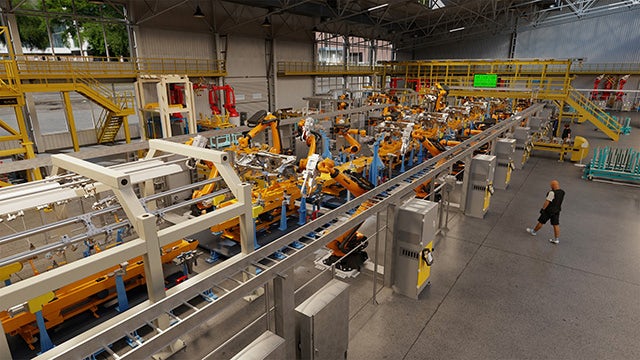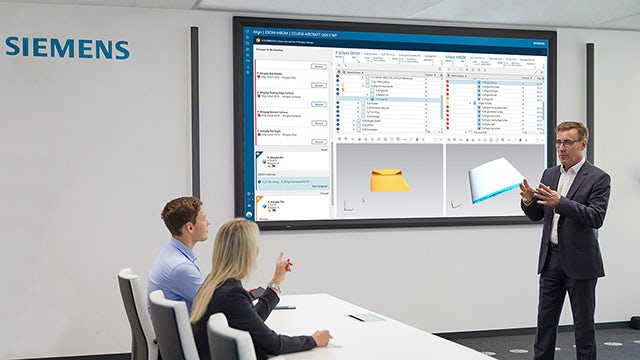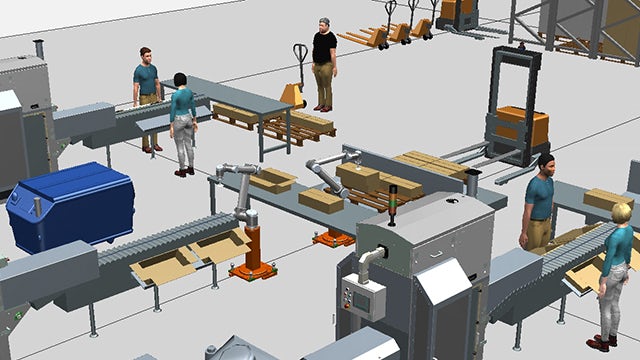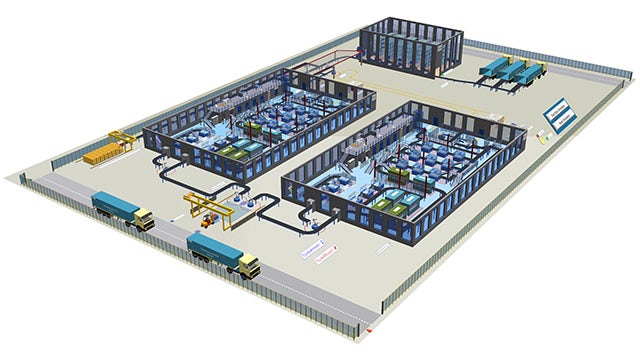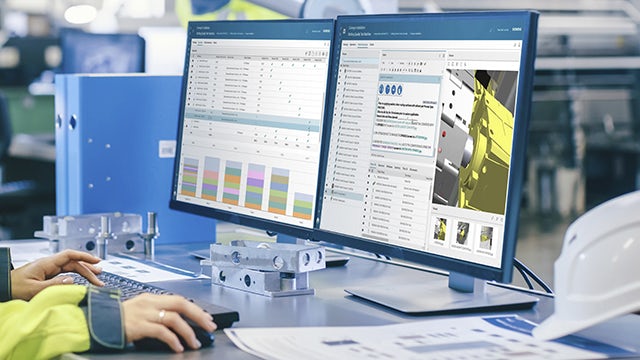Dlaczego warto korzystać z oprogramowania Tecnomatix?
Tworzenie cyfrowego bliźniaka
Modeluj, symuluj i optymalizuj kompleksowego cyfrowego bliźniaka procesów produkcji, obejmującego roboty, automatyzację, systemy transportu materiałów i ludzi, aby poprawić wyniki przedsiębiorstwa.
Większa elastyczność
Wykorzystaj symulację i optymalizację zautomatyzowanych lub ręcznych procesów produkcji, aby oceniać i wdrażać zaawansowane techniki produkcji, sprzęt i procesy pozwalające zwiększyć elastyczność produkcji.
Szybsze wprowadzanie innowacji
Korzystaj z realistycznego i immersyjnego środowiska o wysokiej wierności oferującego oparte na fizyce narzędzia do modelowania, symulacji i optymalizacji, aby przyspieszyć wprowadzania innowacji.
Produkcja uwzględniająca potrzeby ludzi
Co pozwala nam dotrzeć na dno oceanu i w przestrzeń kosmiczną? Co zapewnia nam bezpieczeństwo i łączność? Produkcja uwzględniająca potrzeby ludzi.
Produkcja uwzględniająca potrzeby ludzi już dziś pomaga przekształcić jutrzejsze innowacje w dzisiejsze kreatywne produkty. Dzięki zastosowaniu przełomowych technologii, takich jak zaawansowana robotyka i sztuczna inteligencja, samoorganizujące się fabryki stają się rzeczywistością. Zajrzyj w przyszłość produkcji.
Poznaj możliwości oprogramowania Tecnomatix
Wykorzystaj cyfrową produkcję, aby usprawnić działanie przedsiębiorstwa i wprowadzić je w przyszłość.
Poznaj aktualności blogu poświęconym oprogramowaniu Tecnomatix
Electrolux
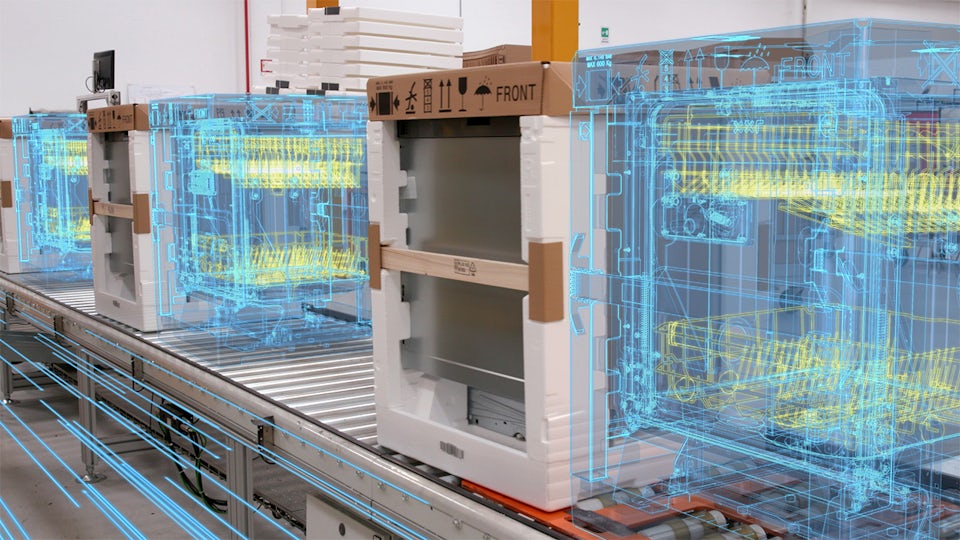
Teamcenter, Simcenter and Tecnomatix help reduce development time by 20 to 30 percent
Firma:Electrolux
Branża:Produkty konsumenckie i handel detaliczny
Lokalizacja:Stockholm, Sweden
Siemens Software:Simcenter 3D Solutions, Teamcenter, Tecnomatix
Poznaj grupy produktów oprogramowania Tecnomatix
Wykorzystaj w pełni możliwości procesów produkcji i wyposażenia dzięki oprogramowaniu do wirtualizacji produkcji.




